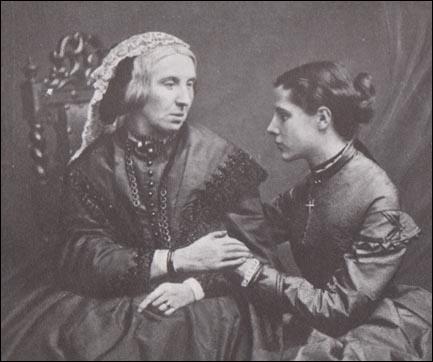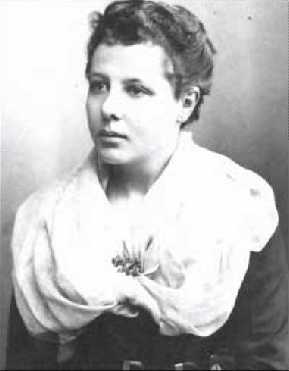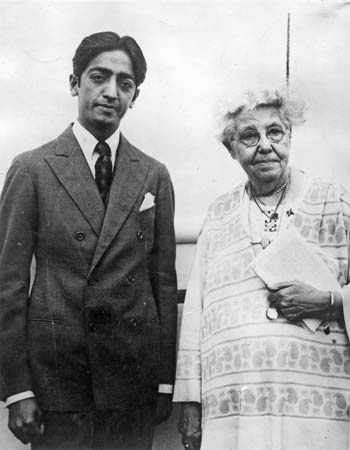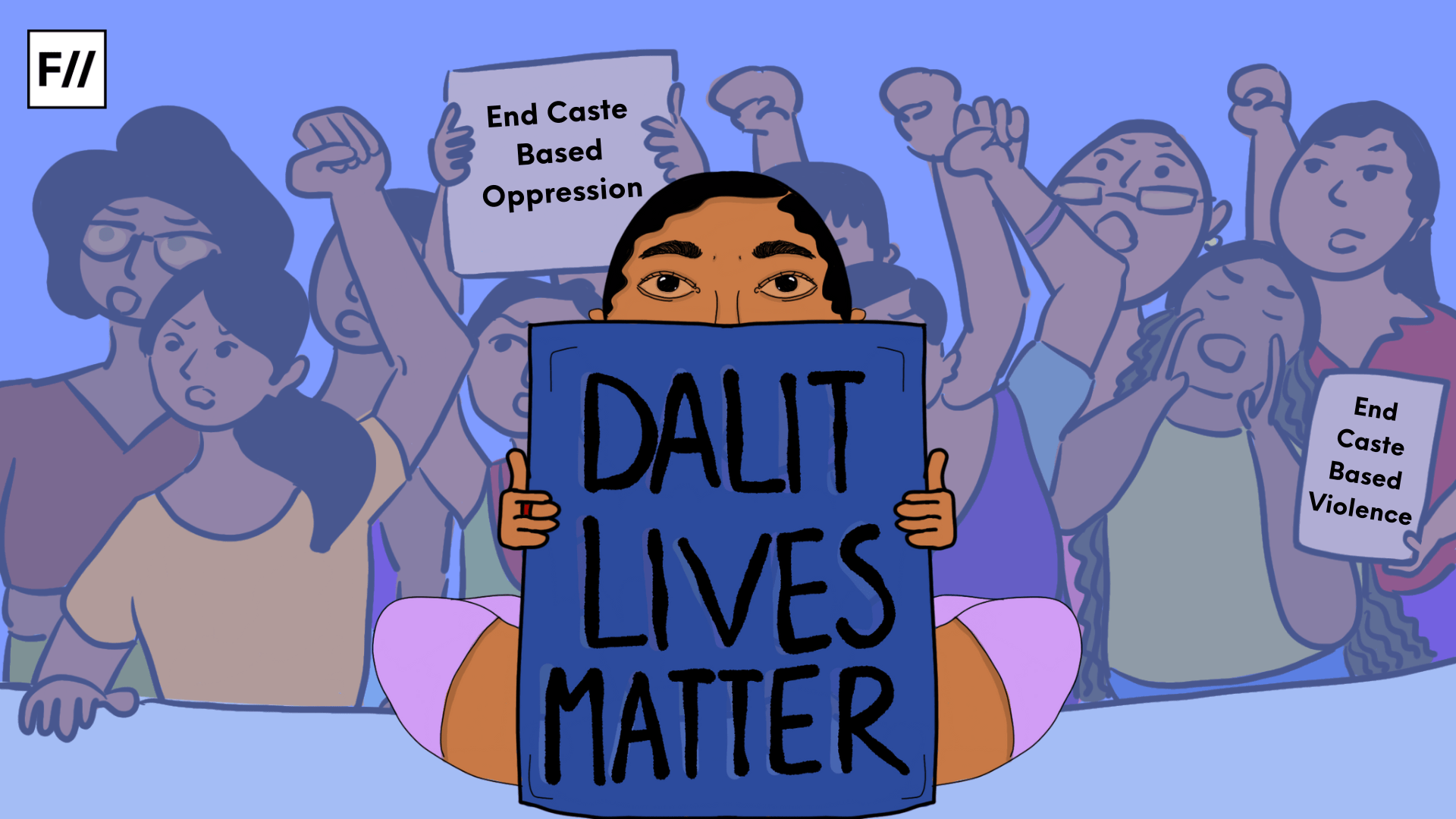Annie Besant was a noted philosopher, social reformer, women’s rights activist, besides being a prolific writer and orator. Her name remains inextricably linked with India’s struggle for freedom. She figures among world famous personalities who made India their home for good.
Early life
She was born as Annie Wood on 1st October 1847 in London, into a middle-class Irish family. Her father’s untimely demise plunged the family into penury. Annie’s mother placed the child under the loving care of her affluent friend Ellen Marryat. Annie grew up in comfort, imbued with the ideals of duty towards society, women’s rights, etc.

Annie Besant with her mother. Image Credit: Spartacus Educational
She had the opportunity to go travelling in Europe. At the age of 20, she married Frank Besant, a clergyman. They had two children. However, Annie’s increasingly anti-religious views led to a legal separation in 1873. She got the custody of the children besides a monthly allowance from her husband.
New ideas, ties and social activities
At this point in her life, Annie Besant was exposed to new currents of thought as a member of the National Secular Society (NSS). She challenged religious beliefs and the conventional thinking of society. She even targeted churches regarding how they controlled people’s lives.
Besant was a brilliant speaker and soon gained popularity. She would highlight all prominent issues of British life and society, vociferously demanding improvement, reform and freedom. For a considerable period of time, Besant was in an intimate relationship with NSS leader Charles Bradlaugh, an aspiring politician-turned-MP.
She was the co-editor of National Reformer, a weekly which advocated progressive ideas e.g trade unions, national education, voting rights for women and birth control. For publishing material on birth control inspired by Fruits of Philosophy, written by U.S birth-control campaigner Charles Knowlton, she along with Bradlaugh were found guilty of publishing an “obscene libel”.
Imprisonment seemed imminent; however, the case was eventually dismissed because the charges had not been properly drawn up. The scandal cost Besant the custody of her children. Frank Besant managed to convince the court that she was unfit to look after them. So their custody was handed over to him permanently.
Annie Besant was actively involved in campaigns for workers’ rights, trade unionism and so forth. On 13th November 1887, she delivered an inspirational speech at a protest meeting in Trafalgar Square which became known as ‘Bloody Sunday’.
In 1888, she played an important role in the successful London matchgirls’ strike – an uprising of women involved in the matchstick factories who were very poorly paid. She also supported the successful London dock strike of 1890.
Diverse schools of thought

Image Credit: Vice and Virtue
Her brush with Socialism came about through an intimate association with the renowned Irish author/satirist George Bernard Shaw. Shaw motivated her to join the Fabian Society, a Socialist Democratic organisation which founded the London School of Economics & Political Science in 1895.
During the late 1880s, Annie Besant dabbled for a while in Marxism. She was introduced to it by Edward Aveling, a young socialist who was a live-in partner of Eleanor Marx, Karl Marx’s daughter.
Theosophy and the changes it brought in her life
In the late 1980’s, Annie Besant stumbled upon The Secret Doctrine, written by Theosophist Helena P. Blavatsky. Highly impressed, she managed to meet Blavatsky in Paris in 1890. Besant’s intellectual journey always involved a quest for transformation.
Having found it in Theosophy, she joined the Theosophical Society. After Blavatsky’s demise in 1891, Annie Besant emerged as a leading figure. In 1893, she represented the school at Chicago’s Parliament of Religions.
Also Read: Matangini Hazra And Her Sacrifice For India’s Freedom | #IndianWomenInHistory
That same year, she travelled to India for the first time. The Theosophical Society later split. The original society, led by Henry Steel Olcott and Besant, known as Theosophical Society Adyar, still functions in Chennai.
Foray into Indian politics
Annie Besant actively participated in local politics. She joined the Indian National Congress which was originally a debating body. It met annually to consider resolutions on political issues. It demanded a greater say for the Indian middle-class in the British Indian government.
In 1914, after World War I broke out, Besant declared, “England’s need is India’s opportunity“. As an editor of the New India newspaper, she attacked the colonial government of India, demanding clear and decisive moves towards self-rule.
Focus on education
Annie Besant set up a new school for boys, the Central Hindu College (CHC) at Banaras. It was mainly sponsored by Indian princes. In April 1911, Besant met Pandit Madan Mohan Malaviya and they decided to establish an institute at Banaras.
The Banaras Hindu University began functioning on 1st October 1917, with the Central Hindu College as its first constituent. In 1922, she helped establish the Hyderabad (Sind) National Collegiate Board in Mumbai, India.
The Home Rule Movement

Besant with fellow members of the Home Rule League. Image Credit: Vivace Panorama
In April 1916, the Indian Home Rule League was launched by Lokmanya Bal Gangadhar Tilak. In September that year, Annie Besant launched the Home Rule League. Their demand was self-government within the British Empire for all of India.
The League worked all year round. Its ramification of local branches helped it organise demonstrations, public meetings and agitations. In June 1917, Besant was arrested and kept in custody in a hill station.
Undaunted, she flew a red and green flag in her garden. The Congress and the Muslim League jointly threatened to launch protests if she was not released. The government relented and Annie Besant was freed in September 1917.
In December, she assumed the presidentship of the Indian National Congress for a year. Post World War I, Congress found a new leader in Mohandas K. Gandhi – who had supported the demand for Besant’s release.
Annie Besant and Gandhi began to clash. He felt that the Theosophical Society stressed on intellectual development rather than brotherhood. In 1919, Gandhi launched the Satyagraha against British rule which later turned violent.
Besant’s principal objection was to Gandhi’s making it a mass movement as she believed the common man lacked the ability to meet physical abuse with non-violence. Hence, she feared the movement would turn violent. – “Brick-bats and Bullets”, as she termed it. She hailed Gandhi as a “saint” but not a politician. Annie Besant left Congress to join the Liberal Party.
Last years

Annie Besant and Jiddu Krishnamurti. Image Credit: Theosophical Library
Annie Besant continued to campaign for India’s independence, not only in India but also in her tours of Britain. She intermittently published letters and articles demanding independence.
In the late 1920s, she travelled to the United States along with her protégé and adopted son Jiddu Krishnamurti, who later metamorphosed into an outstanding philosopher of the modern age. Annie Besant died of age-based maladies on 20th September 1933 in Adyar, Chennai. She was 85 years old.
The nation remembers Annie Besant

Image Credit: iStamp Gallery
On 1st October 1963, the Indian Postal Department released a postage stamp to commemorate her birthday. A neighbourhood bordering the Theosophical Society headquarters in Adyar, Chennai, was renamed Besant Nagar in her memory.
References:
Wikipedia
Inuth
Preserve Articles
IAS Paper
Also Read: Bhikaji Cama: First Woman To Hoist Indian Flag On Foreign Soil | #IndianWomenInHistory
Featured Image Credit: Madras Courier




